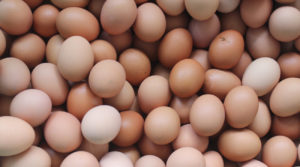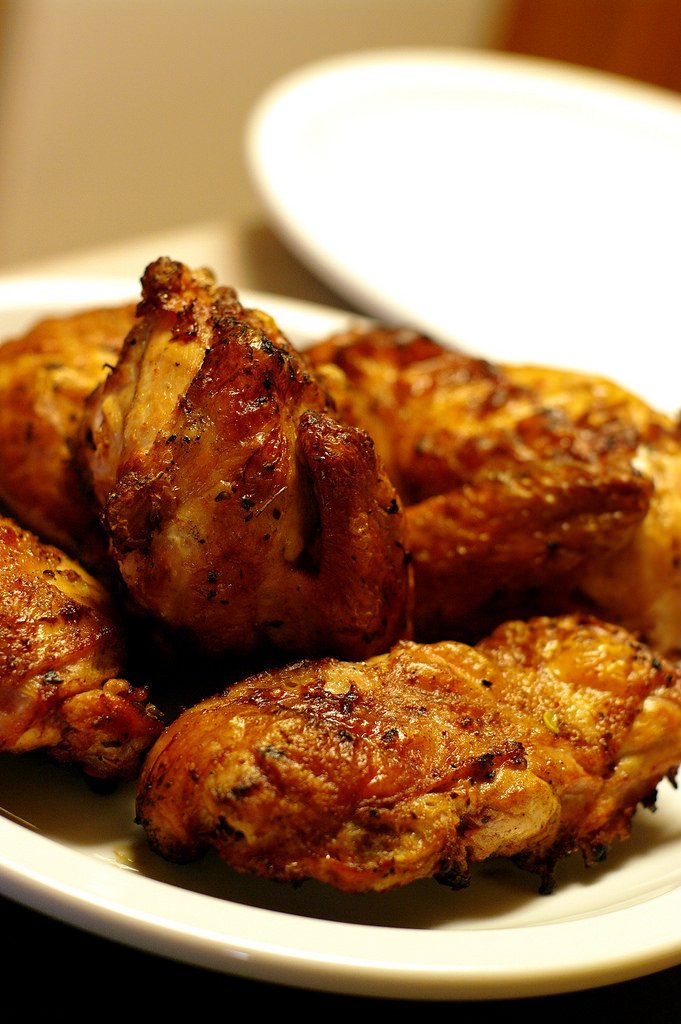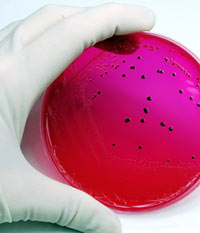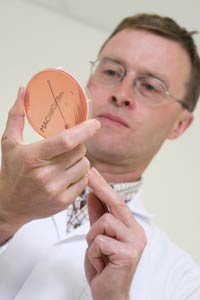Do all chickens have salmonella
More and more people are getting Salmonella from backyard chickens. Are you at risk?
This year there were more cases of Salmonella linked to backyard chickens than ever before recorded by the Centers for Disease Control and Prevention (CDC). In fact, there were over ten Salmonella outbreaks, and 1,100 cases in 48 states just this year so far!
We'll tell you what Salmonella is, help you figure out if you're at risk, and let you know the best practices for how to stay healthy. Having backyard chickens is fun, but getting Salmonella definitely isn't!

Source: CDC
What is Salmonella?
Salmonella is a bacteria that can cause nausea, fever, abdominal cramps and abdominal pain, and severe diarrhea. Symptoms develop 12-72 hours after infection.
Typically, Salmonella is a food-borne illness that makes over a million people sick annually. While most Salmonella infections are from food, it is also linked to live animals such as reptiles, birds, and livestock such as live poultry (backyard chickens) and even baby cows.
Most people with healthy immune systems get well within a week without medical treatment. However, this year 250 of the 1,100 chicken owners exposed to salmonella from backyard flocks needed inpatient hospital care to get better. A weakened immune system combined with Salmonella can be really debilitating and even lethal.
When and where are you at risk of Salmonella from backyard chickens?
Cases of salmonella from backyard poultry are skyrocketing. There were twice as many cases this year over last year. Some of the increase in Salmonella illnesses linked to backyard chickens may simply be due to the fact that more people are raising backyard chickens. Chickens can co-exist with Salmonella; they can even be positively covered with it and appear perfectly healthy.
Flock owners can get sick when Salmonella bacteria from feathers, coop bedding, water buckets, or even coop dust from a doorknob or bucket or some other surface travel from hand to mouth.
While you can get sick from backyard chickens carrying Salmonella, you can also get Salmonella from undercooked meat, undercooked eggs or raw eggs, and unpasteurized milk, or raw milk. You don't actually have to eat these to get ill. There is a potential for cross contamination: your hands and/or surfaces that touched raw meat, fresh eggs, or milk which then touch other foods during meal preparation and cross contaminate to make their way into your mouth.

Source: CDC
Salmonella Smart Prevention No. 1: Wash your hands.
The number one way to stay healthy is to wash your hands every time you come back in from the coop and any time you handle chicken food or water containers, eggs, or the chickens themselves. If soap and water wash isn't available, use a hand sanitizer.
Everyone in the household needs to wash their hands. If everyone is not practicing good hand washing after visiting the coop, collecting eggs, or watering or feeding the chickens, there is greater risk of cross contaminating things like doorknobs and other surfaces.
Salmonella Smart Prevention No. 2: No coop items in the house.
Keep your coop shoes and any water buckets or food containers (and chickens!) out of your house. By coop shoes, we mean use a separate pair of shoes when you go into the coop to collect eggs, and keep those shoes outside your house. We keep our coop boots at the bottom of the garage stairs, off to the side and away from other foot traffic.
All coop items stay outside the house. We keep water buckets outside the back door and a clean five-gallon bucket in the garage. In warmer weather, we fill the chickens' water buckets at the outdoor faucet nozzle. But i n freezing weather, we use the clean five-gallon transfer pail kept in the garage for water because our "frost proof" outdoor nozzle still freezes when it gets really cold.
Also, we don't keep this pail near our coop boots. We fill the clean five-gallon bucket in a downstairs bathtub. Then, we pour the water into the coop buckets outside the house and set the clean bucket back in the garage.
The main idea is to keep your coop items in the coop and away from the house.

Source: CDC
Salmonella Smart Prevention No. 3: Kid safety.
Young children are even more likely to put their hands in their mouths than adults, so the risk of Salmonella may be higher with kids. Look but don't touch is a good way to teach small children about interacting with backyard chickens. If that's not realistic, supervise them closely and be sure they wash their hands.
Salmonella Smart Prevention No. 4: No smooching.
It probably goes without saying, but don't kiss your chickens. Chickens are cute, and yes, it's nice to pick them up sometimes, but hold off on smooching feathers unless you feel like the risk of Salmonella is worthwhile (and we don't). This includes baby chicks! As cute as they may be, baby chicks from a mail-order hatchery are a major carrier of Salmonella infections and cause multi-state Salmonella outbreaks annually.
Salmonella Smart Prevention No. 5: No food in or near the coop
Don't eat in or around the coop. Hands, food, and coop germs don't mix well. Really, salmonella prevention is mainly just common sense!

Source: CDC
Now that you know how to protect yourself from Salmonella, read up on biosecurity and how to protect your backyard birds from getting sick!

What's your main Salmonella precaution? Let us know in the comments below!
WATCH NOW: How to Have the Best Tasting Eggs from Your Backyard Chickens
Table Of Interest
Today, you and I will quickly take a look at the topic “Salmonella And Chicken Eggs | How Chickens Get Salmonella“.
This has become necessary as we have sen overtime that several individuals have been searching for topics related to the above topic Salmonella And Chicken Eggs | How Chickens Get Salmonella.

However, if you are among those that have been searching for answers to [how common is salmonella in eggs, do all eggs have salmonella, can you get salmonella from cooked eggs, how do chickens get salmonella, how to tell if an egg has salmonella, salmonella eggs, salmonella from eggs symptoms, chances of getting salmonella from raw eggs, Salmonella And Chicken Eggs | How Chickens Get Salmonella], then you can see that you are not the only one.
Nonetheless, you shall get all this information right here on this blog.
Salmonella And Chicken Eggs | How Chickens Get Salmonella

Have you ever heard about Salmonella? People who were unfamiliar with this kind of disease might just have thought it for a typical food-related illness.
Even though they were considered as one of the commonest food-borne agents that can cause food poisoning, it’s not always Salmonella which causes you to suffer from watery diarrhoea or any other related food poisoning symptoms; it’s probable but not always.
However, it is worth noting that, the figure which was presented in various studies regarding the occurrences of food poisoning related to Salmonella in Malaysia might have been underestimated (high incidence of unreported cases).
This can be due to a few factors such as poor access to a proper healthcare, financial limitation, lack of knowledge and limited resources for diagnosing Salmonellosis.

In 2016, it was documented in a journal published by Thung TY et al. regarding a 20% incidence of Salmonella-infected meat which was identified among 120 chicken meat.
That was quite significant won’t you say? Even though the number seems small (24 meat affected) but treatments required for treating such illness is quite significant.
A financial record which has been documented by the United States Department of Agriculture (USDA) in 2015 specifically for treating food-borne illnesses related to Salmonella infection has shown an extremely expensive figure (around 3.7 billion dollars).
The infection is especially prevalent among countries which were producing a large number of poultry products such as eggs and not surprisingly, Malaysia is one of them.
It was estimated that the number of chickens meat produced in Malaysia alone were approximately 1.44 million tonnes a year to supply the high domestic demands due to the fact that Malaysian were one of the highest poultries meat consumers in the world (around 40 kg/year).
Despite the fact stated above, the number of sales recorded in any of the large processing facilities (specifically for poultry products) still remains average.
This is due to the fact that, most of the necessities related to food were provided and usually bought at the wet markets which are quite popular in most of the Asian countries.
I’m not having any problems with the concept of having wet markets in any country; it just that any fresh products which were sold in that particular places were exposed to the surrounding environment at a certain temperature which is optimal for bacterial growth.
However, the price of a poultry product sold in wet markets was relatively cheaper than the price of the poultry product sold by any poultry’s processing facilities making it one of the most reasonable places to be chosen by consumers when it comes to making a decision regarding where to buy chickens for lunch/dinner.
What Do You Need To Know About Salmonella?

Before we discussed regarding eggs and salmonella, there are a few things you should know about the bacterium itself since knowing the basic structure of this organism and how it operates would make it much clear regarding the importance of choosing food products which are free from this kind invading pathogen.
Unlike some microbial organisms, the existence of Salmonella is ubiquitous. It can be found literally everywhere, I’m not sure if it is applied to the north and south pole due to the fact that they were quite an unsuitable habitat for them to live in, but generally, they can be found anywhere on earth.
Even if it is not common, there were a few cases of antibiotic-resistant Salmonella species which has arisen possibly due to antibiotic abuse but we’re not going to focus on that part. Maybe soon, sometimes in the future.
Salmonella is a flagellated bacterium which means in most of the cases, they were able to propel themselves to a specific point in the body to cause a specific kind of pathology.
Other than that, they were Gram-negative (pink in gram staining) bacteria which are usually identified through 3 primary antigens that can be found on the bacteria surface:

- H antigen (flagellum)
- O antigen (somatic – usually found on the outer membrane of the bacterium)
- Vi antigen (this kind of antigen only possessed by a few subspecies of Salmonella)
The most important part which determines the virility of the organism is a complexly-shaped lipopolysaccharide which acts like an endotoxin of the bacterial species.
The complex constitutes of three important structure; the central portion is composed of a structure called the R core which is sandwiched between two other structures, the outer coating protein called the O-polysaccharide and the inner structure called the A coat.
The R core which has been the central structure of Salmonella’s endotoxin were also found in various other disease-causing Gram-negative bacteria which make it easier to produce an antibiotic to counteract all of them.
It is also one of the possible reasons why antibiotic resistance has arisen from this type of bacteria, too many infections can be treated by a single antibiotic and repeated exposure can cause mutations which will allow them to survive the onslaught.

The outer coating which is made up of polysaccharides is an important antigen which usually determines their virulence.
It consists of a series of interconnected sugar molecule which measures the capability for the bacteria to cause diseases; a shorter chain of O-sugar would simply mean that the bacterium is less virulence than its counterpart (a longer O-sugar chain Salmonella).
Even though, there were quite a number of diseases which can be caused by the bacteria in the Salmonella species, most of them cater for a specific kind of disease:
- Cry Me A River – From Biology To Psychology OfTears
- Redefining ‘Health’ For The 21st Century | Health Care Changes In The 21st Century
- Missile Technology – The Weapon Of Destruction
- Discussing Day-to-Day Fear | Types Of Fears & How To Overcome Them
- Electromagnetism – Antenna Radiation Patterns | How To Read Antenna Radiation Patterns
- Do Robots Really Have Emotions? | Can Artificial Intelligence Feel Emotions?
- Gastroenteritis is usually caused by Salmonella typhymurium and Salmonella enteritidis
- Enteric fever is usually caused by Salmonella typhi and Salmonella paratyphi-A
- Focal infections were usually caused by a much rare Salmonella choleraesuis
However, that doesn’t rule out the other uncommon species of Salmonella if, for example, a patient is diagnosed with enteric fever. The ability for a Salmonella species to cause a specific kind of disease would depend on a few factors:
- The structure of the outer lipopolysaccharides coating
- The ability for an individual bacterium to invade a cell
- The ability for an individual bacterium to replicate in the host cell
- The virulence factor (toxin)

Some steps in the mechanisms of how Salmonella cause symptoms in an individual were not known.
Typically, when someone eats contaminated foods which contain the bacteria, their ileum (the distal part of the small intestine) and the proximal part of the colon would be colonised by the bacteria.
This would lead to the invasion of the mucosal membrane which will allow the bacteria to exert its toxic effect causing an acute inflammatory response with or without ulceration of the surface epithelium.
This will activate adenylate cyclase which will results in an uncontrolled secretion hence the diarrhoea. Unfortunately, the infection is not quite simple as the toxin produced by Salmonella can go systemic.
In some strain of resistance salmonella, they can cause damage to multiple organs depending on where do they end up with but that is very rare.
Whether or not someone will recover from such infection, will depend on the integrity of the host immune system and a few other protective mechanisms that will resist intestinal colonisation such as low pH stomach juice, the degree of the intestinal motility, the normal flora of the intestine and presence of mucosal antibodies.
How Do Salmonella Affect The Chicken’s Egg?

Contaminated chicken’s eggs have been the primary sources of Salmonella infection in human population, causing about 53% from the overall cases that have been reported to the Centre for Disease Control and Prevention (CDC) between the years of 1985 to 2002 (Harriet Whiley, 2015).
There are two possible pathways that can be taken which will end up with the formation of contaminated eggs that will be sold to consumers.
In the direct pathway, the infection originated from the hen’s reproductive system while in an indirect pathway, the causes can be attributed to the environment of the egg production site which may include, the type of food being fed to the individual hen, how the hen’s foods were being prepared, the hygiene level of the egg production site, the temperature and condition during the egg’s storage, etc.
The thing is, even if the eggs being sold were contaminated with Salmonella, most of the time, the bacteria would be killed during the cooking process provided the egg is cooked well with an appropriate temperature.
In recent years, the utilization of products which contain a raw form of eggs such as mayonnaise, ice-cream and milkshakes have been increasing and this effectively causing the probability of foods which are contaminated to be consumed by an individual increase.
Nevertheless, despite all of the possible exposure towards the virility of Salmonella, the chances for a healthy individual to be infected were low (courtesy of various protective mechanisms).
For example, on 13 April 2018, approximately 207 million eggs were distributed in 9 out of 50 states in the United State of America.
All of the eggs were sold but the number of people who were diagnosed with Salmonellosis was 22.
It’s an extremely low figure even though a lot of things should be considered:
- The number of chickens or eggs which were infected by the bacteria were not determined. The number can be small with respect to the total so 22 doesn’t really tell anything.
- In a study conducted by the European Union regarding Salmonella has revealed that only 1 out of 57 cases of Salmonella were reported. So if we consider the figure to be an accurate representation of unreported cases, the actual number of people who were affected should be 1254 people. It’s still small compared to the number of eggs being sold but take note that, the number of people who bought a specific amount of eggs cannot be determined and we don’t even know how many of them who were eating a half-cooked or raw eggs as opposed to a properly-cooked egg.

Other than the mucosal lining of the human’s intestine, Salmonella can invade the mucosa of a hen’s ovary and intestine making it safe to assume that the actual problem can be originated from the way the chicken was raised (how their food was given, how they were taken care of); however, it’s still difficult to determine in which level do the Salmonella started to affect the production of a healthy chicken egg.
Other than that, this particular bacteria can diffuse in when they were in contact with uninfected chicken eggs. This is why the condition of the storage unit which is used to store these eggs should be monitored as well.
Even with the greatest care which a facility can provide, the rate of infected eggs can only be reduced to as far as 1:20,000 ratio. The eggs should be cooked adequately (usually until the white and yolk portion has become firm) to minimize the number of pathogens which might be lurking on the inside of our precious foods.
If any of you have any symptoms which possibly can be caused by any kind of food poisonings such as fever, vomiting and diarrhoea, it will be wise to consult a physician for a proper mode of treatment as sometimes, the symptoms can be quite severe which might lead to even worse consequences.
Oh yeah, do not take any kind of antibiotics unless prescribed by the attending physician. Antibiotics can sometimes, make things worse, as it would affect the population of flora in the intestine giving much opportunities to the Salmonella to invade.
That’s the much we can take on the topic “Salmonella And Chicken Eggs | How Chickens Get Salmonella“.
We frequently get owners asking questions about the risks of getting Salmonella from their chickens and eggs. So what exactly is Salmonella?

Salmonella is a bacteria which can infect both animals and man. There are several species of Salmonella, each species has it’s own type of animal that it prefers to infect e.g. Salmonella Dublin prefers to live in cattle.
Whilst most Salmonella species prefer to infect a particular type of animal they can usually also infect other animal species and humans. Not all Salmonella species cause illness and not all Salmonella species which cause disease in one species will go on to cause disease in other species. E.g. Salmonella Enteritidis prefers to infect chickens it does not normally cause the chickens many problems but this species can occasionally infect people.
Salmonella can cause vomiting and diarrhoea in people and in extreme cases cause blood poisoning. In animals it can cause diarrhoea and blood poisoning.
Can Salmonella cause illness in my chickens?
Yes it is indeed possible for Salmonella to cause disease in chickens; however this is extremely rare. There are two main species involved: S. Pullorum and S. Galliarum. S. Pullorum can cause blood poisoning, diarrhoea and sudden death in young chicks under three weeks. S. Gallinarum can cause sudden death, diarrhoea and difficulty breathing.
Can chickens carry Salmonella species which can cause illness in me and my family?
Whilst it is not particularly common Salmonella can cause illness in people especially if they are vulnerable people with immunosuppressed diseases and pregnant women.There are two species which chickens can carry that can cause illness in people S. Enteritidis and S. Typhimurium. These species don’t cause illness in chickens but can in extreme cases infect people. In the 80’s Edwina Curry caused a storm by claiming that most UK eggs had Salmonella. This caused a plummet in egg sales and subsequently the egg industry began to routinely test all egg and meat producing chickens regularly. Most laying flocks are now vaccinated for these strains of Salmonella.
We would always recommend that owners pay special attention to keeping the hen’s nest boxes really clean. If you find your eggs are covered in dirt and dried faeces do not be tempted to wash them. Shells are porous and any bacteria on the outside will be transferred inside the shell. Just dry wipe with a piece of kitchen towel and ensure all dirty eggs are cooked well.
How do people get Salmonella from their birds?
Most people contract the bacteria from not washing their hands properly after handling their birds or after handling raw meat. They then put their fingers in their mouth and ingest the bacteria.
How can I reduce the risk of Salmonella in my birds?

Rodents and wild birds are potential carriers so ensure you control rats with bait stations and keep feed in secure containers. A lot of people don’t consider rodent control but it is an important aspect of chicken keeping. Rats also carry other diseases that humans can catch, the most common one being Weils Disease. This can be spread through infected rat urine coming into contact with chicken food or water drinkers.
The use of products such as Beryl’s Friendly Bacteria are especially indicated if you are concerned about Salmonella. These sachets contain over 200 friendly bacteria, these friendly bacteria compete for space in the gut with the harmful Salmonella bacteria. This colony of friendly bacteria then makes it much harder for the birds’ digestive system to become infected as it prevents the establishment of these pathogens in the bird’s gut. Always follow a routine cleaning regime and use disinfectants that are licensed and approved to destroy bacteria and viruses.
Do I need to vaccinate my birds?
If you are raising a few chicks at home there is no real need to vaccinate your hens. The vaccination process isn’t straight forward and provided you have healthy birds and follow the basic rules of hygiene you should be fine.
Can I test my birds?
You can certainly test your birds for Salmonella with a faecal sample. If you are interested in carrying out such a test then contact Chicken Vet for more information.
Salmonella is a kind of bacteria, with many different types. The type responsible for most infections in humans is carried by chickens, cows, pigs, and reptiles (such as turtles, lizards, and iguanas). Another, rarer form — called Salmonella typhi — causes typhoid fever.
Salmonella infection, or salmonellosis, is a foodborne illness caused by infection with Salmonella bacteria. Most infections spread to people through contaminated food (usually meat, poultry, eggs, or milk).
A Salmonella infection typically causes:
Because many different kinds of illnesses can cause these symptoms, most doctors will take a stool sample to make an accurate diagnosis.
Salmonella infections usually clear up without medical treatment.
Salmonella bacteria are often found in the feces (poop) of some animals, particularly reptiles. People who have these animals as pets can get salmonellosis if they handle the reptiles and get the bacteria on their hands.
Salmonella can spread to people in foods contaminated by infected animal feces. This can happen when foods such as poultry, eggs, and beef are not cooked enough. Fruit and vegetables can also be contaminated from feces in the soil or water where they're grown.
Yes. People with salmonellosis can spread the infection from several days to several weeks after they've been infected — even if their symptoms have disappeared or they've been treated with antibiotics.
Not everyone who ingests Salmonella bacteria will become ill. Children, especially infants, are most likely to get sick from it. About 50,000 cases of salmonellosis are reported in the United States each year and about one third of those are in kids 4 years old or younger.
People at risk for more serious complications from a Salmonella infection include those who:
- are very young, especially babies
- have problems with their immune systems (such as people with HIV)
- take cancer-fighting drugs or drugs that affect their immune system
- have sickle cell disease
- have an absent or nonfunctioning spleen
- take chronic stomach acid suppression medicine
In these higher-risk groups, most doctors will treat an infection with antibiotics to prevent it from spreading to other parts of the body. Antibiotics do not appear to help a healthy person whose infection is not severe — and may actually lengthen the amount of time the person will carry the bacteria.
Because many different illnesses can cause similar symptoms (such as nausea, fever, cramping, and diarrhea), doctors may send a stool (poop) sample to the lab for testing.
A severe Salmonella infection will require more testing to see which specific germ is causing the illness and which antibiotics can be used to treat it.
If your child has salmonellosis and a healthy immune system, your doctor may let the infection pass without giving any medicines. But any time a child develops a fever, headache, or bloody diarrhea, call the doctor to rule out any other problems.
If your child is infected and has a fever, you may want to give acetaminophen to lower the temperature and relieve cramping. As with any infection that causes diarrhea, it's important to give your child plenty of liquids to avoid dehydration.
Salmonellosis symptoms can take from 6 to 72 hours to start after someone ingests the bacteria. In most people, the illness lasts for 4 to 7 days after symptoms begin.
Hand washing is a powerful way to guard against Salmonella infections. So teach kids to wash their hands well and often, particularly after trips to the bathroom and before handling food.
Here are some other ways to protect your family from Salmonella infections:
- Cook food thoroughly.Salmonella bacteria are most commonly found in animal products and can be killed by the heat of cooking. Don't serve raw or undercooked eggs, poultry, or meat. Microwaving is not a reliable way to kill the bacteria. If you're pregnant, be especially careful to avoid undercooked foods.
- Handle eggs carefully. Because Salmonella bacteria can contaminate even intact and disinfected grade A eggs, cook them well and avoid serving poached or sunny-side up eggs (with runny yolks).
- Avoid foods that might contain raw ingredients. Caesar salad dressing, the Italian dessert tiramisu, homemade ice cream, chocolate mousse, eggnog, cookie dough, and frostings can contain raw eggs. Unpasteurized milk and juices also can be contaminated with Salmonella.
- Clean cooking surfaces regularly. Keep uncooked meats away from cooked and ready-to-eat foods. Thoroughly wash your hands, cutting boards, counters, and knives after handling uncooked foods.
- Take care with pets. Avoid contact with the feces of family pets — especially reptiles. Wash your hands well after handling an animal and make sure that no reptiles are permitted to come into contact with a baby. Even healthy reptiles (especially turtles and iguanas) are not safe pets for small children and should not be in the same house as an infant.
- Don't cook food for others if you are sick, especially if you have vomiting or diarrhea.
- Keep food chilled. Don't leave cooked food out for more than 2 hours after serving (1 hour on a hot day) and store it promptly. Also, keep your refrigerator set to under 40°F (4.4°C).
Читайте также:


